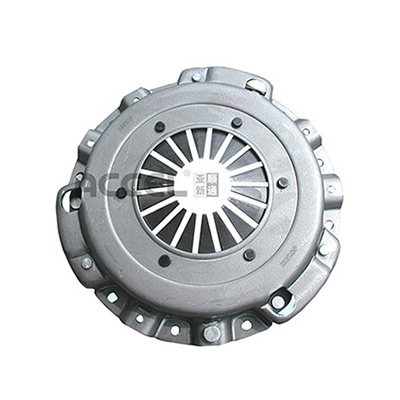- Arabic
- French
- Russian
- Spanish
- Portuguese
- Turkish
- Armenian
- English
- Albanian
- Amharic
- Azerbaijani
- Basque
- Belarusian
- Bengali
- Bosnian
- Bulgarian
- Catalan
- Cebuano
- Corsican
- Croatian
- Czech
- Danish
- Dutch
- Afrikaans
- Esperanto
- Estonian
- Finnish
- Frisian
- Galician
- Georgian
- German
- Greek
- Gujarati
- Haitian Creole
- hausa
- hawaiian
- Hebrew
- Hindi
- Miao
- Hungarian
- Icelandic
- igbo
- Indonesian
- irish
- Italian
- Japanese
- Javanese
- Kannada
- kazakh
- Khmer
- Rwandese
- Korean
- Kurdish
- Kyrgyz
- Lao
- Latin
- Latvian
- Lithuanian
- Luxembourgish
- Macedonian
- Malgashi
- Malay
- Malayalam
- Maltese
- Maori
- Marathi
- Mongolian
- Myanmar
- Nepali
- Norwegian
- Norwegian
- Occitan
- Pashto
- Persian
- Polish
- Punjabi
- Romanian
- Samoan
- Scottish Gaelic
- Serbian
- Sesotho
- Shona
- Sindhi
- Sinhala
- Slovak
- Slovenian
- Somali
- Sundanese
- Swahili
- Swedish
- Tagalog
- Tajik
- Tamil
- Tatar
- Telugu
- Thai
- Turkmen
- Ukrainian
- Urdu
- Uighur
- Uzbek
- Vietnamese
- Welsh
- Bantu
- Yiddish
- Yoruba
- Zulu
Jul . 27, 2024 00:00 Back to list
Durable Rubber Conveyor Belts for Efficient Material Handling in Various Industries and Applications
The Importance of Rubber in Conveyor Belt Systems
Conveyor belts have become an integral part of modern industries, serving as vital components in the movement of materials across various sectors. At the heart of these conveyor systems lies the conveyor belt itself, often made from a variety of materials, with rubber being one of the most commonly used. This article delves into the significance of rubber in conveyor belt systems, highlighting its properties, benefits, and applications.
Rubber is a versatile and durable material that has been favored for conveyor belts for decades. Its unique properties—such as high tensile strength, flexibility, and resistance to wear and tear—make it an ideal choice for handling a wide range of materials. From small package distribution centers to massive mining operations, rubber conveyor belts can accommodate both light and heavy loads, ensuring that materials are transported efficiently and effectively.
The Importance of Rubber in Conveyor Belt Systems
In addition to its strength and durability, rubber also offers exceptional grip and traction. This is particularly important in applications where materials must be moved at an incline or where they are prone to slipping. Rubber’s natural friction helps to secure the materials in place, preventing spillage and ensuring a smooth transportation process. This aspect is crucial in environments like quarries and recycling plants, where maintaining the integrity of the material being moved is essential.
conveyor belt rubber

Another significant benefit of rubber in conveyor belts is its adaptability to different environments. Rubber can be engineered to meet specific requirements by incorporating additives that enhance its properties. For instance, the addition of certain chemicals can improve its resistance to oil, chemicals, and UV radiation, making rubber conveyor belts suitable for a broader range of applications. This adaptability allows businesses to customize their conveyor systems to align with the demands of their specific operational environments.
Furthermore, the environmental impact of rubber conveyor belts is an essential consideration. Modern advancements in rubber technology have led to the development of eco-friendly materials, allowing industries to maintain their operations while minimizing their carbon footprint. For instance, many manufacturers now produce conveyor belts made from recycled rubber or sustainable materials, helping to contribute to a greener planet.
The manufacturing process of rubber conveyor belts also employs cutting-edge technology to ensure high-quality products. Precision engineering and rigorous testing standards during production ensure that the belts meet industry specifications and customer requirements. This attention to quality is vital, especially in industries where failure can result in significant safety hazards or financial losses.
In conclusion, rubber plays a crucial role in the functionality and reliability of conveyor belt systems. Its inherent properties—such as durability, flexibility, and resistance to wear—make it the material of choice for a wide array of industries. As technology continues to advance, the development of high-performance rubber conveyor belts will further enhance efficiency and sustainability, keeping pace with the growing demands of modern industrial applications. Ultimately, understanding the significance of rubber in conveyor systems is essential for businesses looking to optimize their operations and ensure their success in an increasingly competitive market.
-
Upgrade Power Steering Pump Belt for Smooth, Quiet Operation
NewsAug.27,2025
-
Precision Timing Belt & Chain: Engine Performance & Durability
NewsAug.26,2025
-
Precision Lathe Drive Belts: Durable & Reliable Performance
NewsAug.25,2025
-
84.5 Serpentine Belt: Durable & Precision Fit for Your Engine
NewsAug.24,2025
-
Premium Ribbed Drive Belts for Quiet Power Transmission
NewsAug.23,2025
-
High-Performance Vehicle Timing Belt for Engine Precision
NewsAug.22,2025

